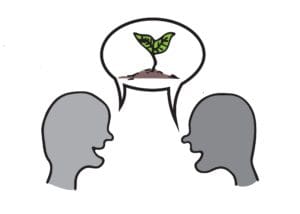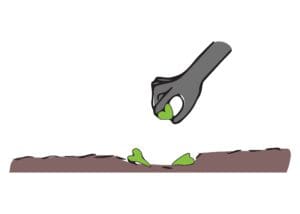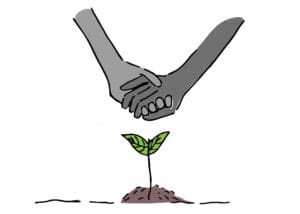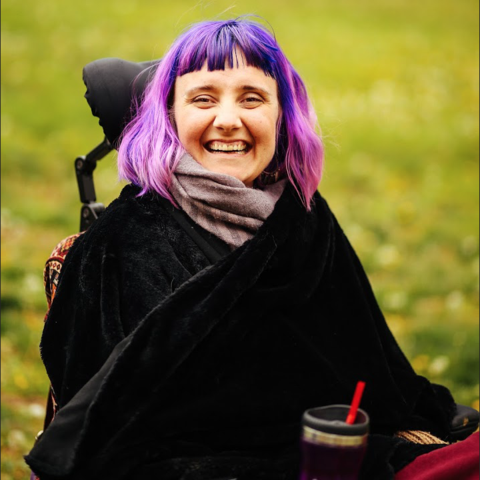Создание классных комнат, свободных от аблеистов и стигмы
 Учить
Учить
Самая большая группа меньшинств в США - это люди с ограниченными возможностями. Узнайте о структурах, основанных на абьюзинге, и распространенных стигмах в образовательной среде.
 Пытаться
Пытаться
Если ученик работает с парапрофессионалом 1:1 и вы даете ему указание, установите зрительный контакт и сначала говорите непосредственно с учеником, а не с его товарищами.
 Пытаться
Пытаться
Перед началом урока спросите учеников с нарушениями речи или слуха, какие способы общения им наиболее удобны.
![]() Помнить
Помнить
Намеренно подходите к представлению. То, как вы представляетесь сами и как вы создаете возможности для других творчески представиться и самоидентифицироваться, может задать тон вашему общению со студентами.
Кончик:
Как и личность, инвалидность не всегда легко заметить. Осознавайте, уважайте и чутко относитесь к тому, чего нельзя увидеть.
Влияние аблеизма и стигмы имеет значение
Понимание того, что такое стигматизация и стигматизм и как они влияют на отдельных людей и классные комнаты, поможет вам стать сострадательным педагогом, который сохраняет и защищает достоинство и жизненный опыт учащихся с ограниченными возможностями. Это понимание также поможет вам отстаивать права учащихся с ограниченными возможностями в школе и за ее пределами.
Аблизм...
- изолирует людей;
- разделяет учащихся;
- заражает процесс разработки политики;
- возникает как структурная и социальная дискриминация.
Будьте внимательны к своему языку

Image credit: Jean Wong
Слова имеют силу. Используемый вами язык может повлиять на восприятие человеком себя или других.
Язык бывает вербальным и невербальным. Язык тела и параязык часто передают больше, чем то, что мы выражаем словами.
Тон вашего голоса так же важен для слушателя, как тон вашего письма для вашего читателя. Ваш тон выражает ваше отношение и уважение к наблюдающим за вами ученикам. Будьте внимательны к своей доставке.
Узнайте больше в GIVE Инклюзивное языковое руководство.
Помните о любых словесных инсинуациях
"Когда вы говорите о человеке с психическим заболеванием, вы можете сочетать определенные слова с изменением тона голоса. Например, вы можете прошептать слова "депрессия" или "биполярное расстройство". Люди улавливают эти сигналы, которые передают слушателю стигму депрессии" - Мелисса Пинто, доктор философии, RN.
Будьте внимательны при представлении
Подумайте, как вы представляете себя и как вы создаете возможности для других представиться и самоидентифицироваться.
Независимо от того, идентифицируете ли вы себя как человека с ограниченными возможностями, не инвалидом или иным образом, подумайте о том, чтобы включить это как часть вашего знакомства, когда вы встречаетесь со студентами или школьными партнерами, как вам удобно. Сообщите учащимся, что вы можете совершать ошибки, что хотите о них знать, и что вы берете на себя ответственность за внесение изменений в то, что находится под вашим контролем.
Когда вы представляете себя новой группе студентов:
- Выберите, какими личностями вы удобно делитесь и какие расставлять приоритеты.
- Подумайте, как ваше вступление может открыть общение и повысить осведомленность о множественных идентичностях и неявных предубеждениях. Как вы можете нормализовать различия и дестигматизировать идентичности? Каковы риски?
- Оставьте время для вопросов, которые могут возникнуть, и будьте готовы ответить на них.
Запланируйте возможность для студентов представиться, сформулировать и рассказать, как они себя идентифицируют. При планировании учитывайте, что вы делаете и чего не знаете о группе людей, об обстановке в классе и о том, сколько времени вы проводите с учениками. Какой уровень риска кажется правильным?
Вот несколько примерных идей для занятий.
- Фрирайтинг: "Что вам нужно знать обо мне, так это..."
- В дальнейшем это может стать высказыванием художника, стихотворением или другим творческим произведением.
- Рисунок/рисунок: Предложите ученикам нарисовать или изобразить, кто они такие или как они выглядят.
- Это может быть буквальный автопортрет или скорее абстрактная интерпретация.
- «Я из…» или другие подобные подсказки могут использоваться в разных дисциплинах.
- Творческое движение: Предложите учащимся представить себя с помощью физического жеста.
- Предложите студентам выбрать и рассказать о художнике или произведении искусства, с которым они идентифицируют себя, и почему.
- Предложите студентам выбрать одну идентичность в качестве вдохновения для художественного произведения, которое они будут создавать индивидуально или в группах, найдя способы представить то, что важно для каждого из них.
Узнайте больше в GIVE Ресурс о взаимосвязанности инвалидности и других идентичностей.
Будьте сознательным коммуникатором в классе.
| Делать | Не надо |
|---|---|
| Установите зрительный контакт и сначала поговорите напрямую с учеником, а не с товарищем. | Положитесь на классного руководителя или среднего профессионала в переводе общения с учеником. |
| Спросите учащихся с нарушениями речи, какие способы общения им наиболее удобны. | Угадайте, что студент пытается выразить словесно или физически. Вместо этого попросите разъяснений. |
| Говорите со студентами уважительным, но обычным языком и тоном, чтобы помочь им почувствовать себя включенными в сообщество. | Предположим, что учащийся не может понять основные инструкции, если у вас нет четких указаний. |
Посадите семена уверенности и самоуважения, поверив в то, что ученики способны

Image credit: Jean Wong
Руководите с сочувствием
Постарайтесь отбросить предвзятые мнения о своих учениках и быть открытыми для новизны и возможностей. Развитие искренней благодарности к каждому уникальному студенту и его индивидуальной жизни создает безграничные возможности для сопереживания.
Семь прав тела
Эти семь прав на тело - консенсус общих ценностей, собранных из философии Востока и коренных народов, религиозных верований и правозащитных организаций. Вы можете использовать эти права в качестве педагогического руководства, чтобы создать безопасное пространство для всех учащихся и дать им возможность быть защитниками самих себя.
- Право присутствовать - существовать в любом пространстве.
- Право чувствовать - испытывать и выражать эмоции.
- Право действовать - выражать себя по-своему.
- Право любить и быть любимым - вести за собой сердцем.
- Право говорить - выражать свои мысли вербальным или невербальным способом.
- Право видеть - замечать или чувствовать по-своему.
- Право знать - чтобы понимать.
Спросите, что вы приняли за истину

Image credit: Jean Wong
"Люди могут считать, что человек с депрессией или другим психическим заболеванием нестабилен, ленив, не заслуживает доверия, неинтеллектуален или неспособен, хотя это не так.
Проверьте свои предположения
Легко войти в класс и присвоить ярлыки поведению учеников. Ошибочное приписывание успеваемости ребенка отсутствию интереса или общей некомпетентности может стать препятствием для доверия к вашим инструкциям и их способности учиться. Это также может невольно повредить вашим шансам наладить позитивные отношения со студентами. Кроме того, темнокожие, небелые и девочки-инвалиды подвергаются дисциплинарным взысканиям чаще, чем белые мальчики с такими нарушениями.
Узнайте больше в GIVE Ресурс для развития позитивных отношений между студентами.
Примите двусмысленность
Не быть авторитетом в предмете - это нормально. В классе дизайн, ориентированный на учащихся, воплощается в коллективном воображении. Когда мы избавляемся от необходимости контролировать результат, мы оставляем пространство для инноваций.
Найдите время для самоанализа
- Как я сейчас говорю о людях с видимой и невидимой инвалидностью?
- Какие языковые обычаи ценят эти сообщества?
- Какие языковые практики вызывают патологию этих сообществ?
- Зависил ли я от классного руководителя или парапрофессионала в переводе общения с учеником или в работе с учеником, с которым мне не очень комфортно общаться?
- Как мне отказали в семи правах в моем жизненном опыте художника или человека?
- Как я был свидетелем того, как ученикам отказывали в правах в классе?
- Как я отказал студентам в их правах на тело в фасилитации или в их артистизме?
- Если бы мы знали ответ, когда начинали, что бы мы могли узнать?
- Как мы могли найти креативные решения?
- Куда направят нас люди, для которых мы создаем?
Обеспечить равенство между всеми учащимися

Image credit: Jean Wong
Отойдите от предположений, сделанных в отношении учащихся
Уделите время тому, чтобы проверить или заметить предположения в языке, используемом вокруг или в отношении ваших учеников, или в любых предпринятых действиях, и при необходимости внесите коррективы.
- Вместо: "Он не может сидеть спокойно и уделять внимание достаточно долго, чтобы что-то делать".
- Попробуйте: "Как сделать так, чтобы занятия были более физически интересными для всех?"
- Вместо: "Она не может читать вслух. Она слишком медлительна".
- Попробуйте: "Давайте уделим ей время и окажем поддержку, пока она читает".
- Вместо того: "Я не думаю, что он может играть главную роль. Зрителям может быть некомфортно видеть и слышать его в таком виде".
- Попробуйте: "Давайте дадим ему главную роль. Если он почувствует, что ему нужен приятель для выполнения части сцены, мы можем разделить роли".
- Вместо: "Возможно, вы не можете заниматься этим делом, но вы можете стать нашим зрителем".
- Попробуйте: "Вы хотите попробовать это занятие? Если да, мы вас поддержим".
- Вместо: "Я не знаю, что с ней не так. Она так мешает и не должна участвовать".
- Попробуйте: Старайтесь не выделять учеников с такими нарушениями еще до того, как они войдут в комнату. Разработайте планы уроков, включающие моменты для эмоциональной грамотности, ведения дневника и исследования в качестве первого шага. Представьте инструменты и пространства для саморегуляции или поддержки в первый же день.
Работа по обеспечению равенства в образовании
Наша культура наполнена представлениями и идеями, связанными с инвалидностью, которые влияют на всю нашу жизнь. Какие предположения вы делаете о
- на что способен студент?
- как студент говорит или общается?
- как студент использует свое тело?
- как выглядит "хороший ученик"?
- что значит или как выглядит старание или усердие?
- что значит или как выглядит активное слушание?
- подходит ли человек для той или иной деятельности или роли?
- Что может чувствовать ученик, если у него что-то не получается?
- как должен выглядеть/звучать исполнитель для аудитории?
Как вы можете использовать свой контент, язык и искусство, которым вы делитесь, чтобы отказаться от предположений и перейти к равенству в образовании для ваших учеников?
Художники в разговоре о стигме
Мэйсун ЗаидКомедиант, актриса, защитник прав инвалидов и танцор чечетки
"У меня церебральный паралич. Я все время трясусь", - объявляет Мейсун Заид в начале этого захватывающего, уморительного выступления. (Я как Шакира и Мухаммед Али". С изяществом и остроумием арабо-американская комедиантка проведет для нас экскурсию по своим приключениям в качестве актрисы, стендап-комика, филантропа и защитника инвалидов". Этот доклад был представлен на официальной конференции TED. TEDWomen 2013.
Адам ПирсонЖурналист, актер, защитник и мотивационный спикер
«Адам поделится важными уроками, которые он извлек, делая карьеру в глазах общественности, преодолевая при этом клеймо, связанное с его уродствами». Этот доклад был представлен на официальной конференции TED. TEDxBrighton 2017.
Линдси Абромайтис-СмитХудожник, писатель и целитель
"Больше всего я горжусь тем, что продолжаю процветать, несмотря на то, что мое тело стало не таким, как у других. Я думаю, что мои лучшие работы были сделаны в результате борьбы с моими ограничениями".
Линдси Абромайтис-Смит всю жизнь занимается искусством. До того, как в 2012 году ей поставили диагноз БАС, Линдси работала кукольником, скульптором и массажистом. Хотя у нее больше нет рук и кистей, она продолжает творчески выражать себя, используя ноги для рисования.
"Жизнь с ALS - это самое сложное, что я когда-либо делал. Она дала мне столько возможностей замедлиться, понять, что для меня важно, и изменить свой взгляд на мир".

Узнайте больше об участии художников с ограниченными возможностями на ресурсе GIVE: Инклюзивный учебный план и показ художников с ограниченными возможностями.


